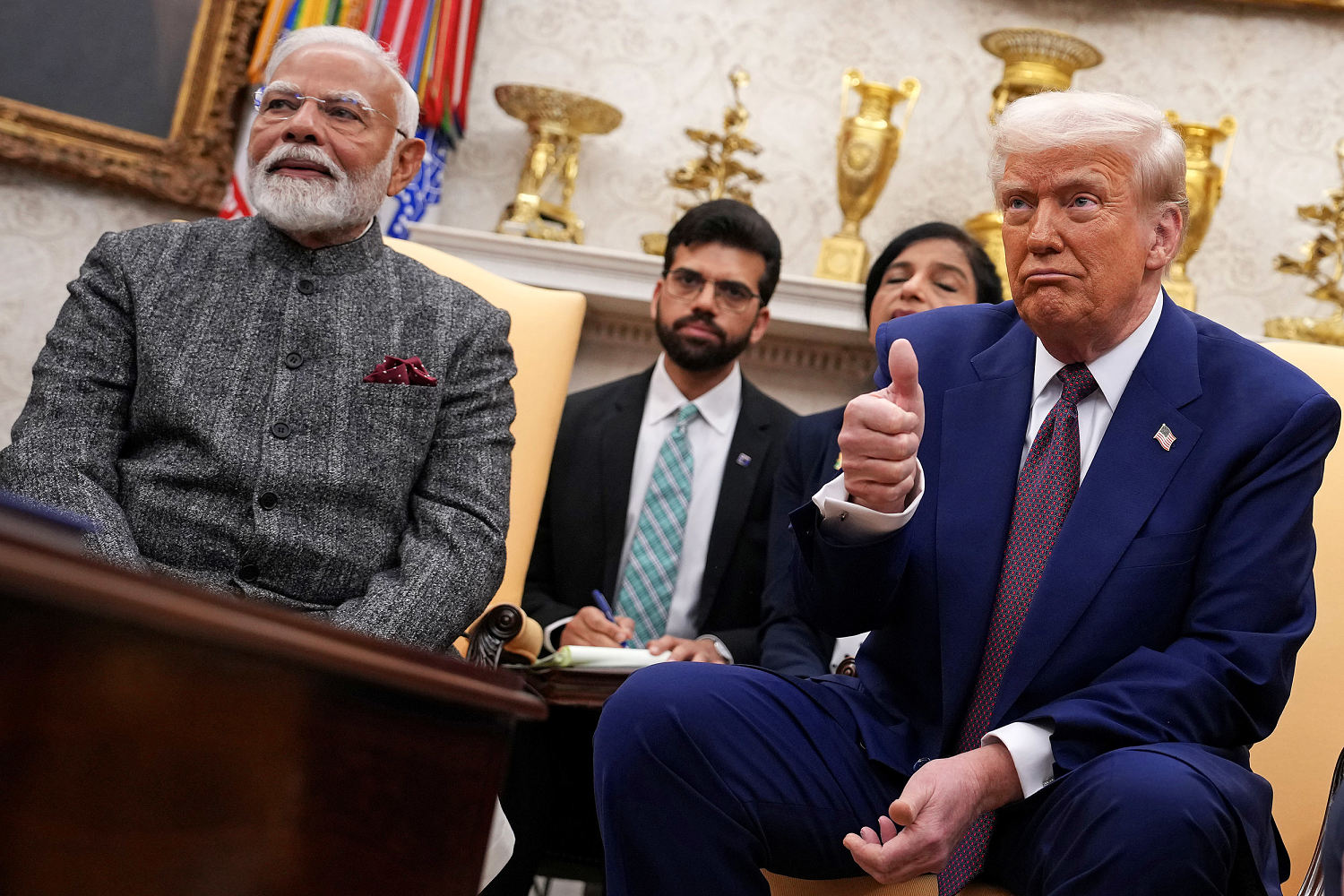
President Donald Trump slapped higher trade duties on India Wednesday, while offering a reprieve to two others — his latest trade-war declarations in what has become a cornerstone of his second administration.
Imports from India now face a 25% tariff, Trump said in a social media post earlier in the day, along with an unspecified penalty for what Trump said was an over-reliance on Russian energy and military equipment. The president later signaled talks with India were ongoing.
Shortly before 4 p.m., Trump said Brazil was now facing a 90% tariff, up from 50%, as the administration also sanctioned the Brazilian judge overseeing the cases of former President Jair Bolsonaro for allegedly plotting a coup. Trump has taken issue with Brazil’s treatment of Bolsonaro, who was a strong supporter in his first term.
Finally, Trump said on Wednesday afternoon that South Korea had made “an offer to buy down” the 25% duty level it is currently facing. “I will be interested in hearing what that offer is,” Trump wrote on his Truth Social platform. NBC News has reported South Korea is interested in investing in U.S. shipbuilding capacity.
On Wednesday evening, Trump announced that he had met with South Korean trade negotiators. “The Deal is that South Korea will give to the United States $350 Billion Dollars for Investments owned and controlled by the United States, and selected by myself, as President. Additionally, South Korea will purchase $100 Billion Dollars of LNG, or other Energy products.”
As a result, Trump said “We have agreed to a Tariff for South Korea of 15%” while American imports would not be hit with any import duties at all.
The announcements come ahead of a Friday trade negotiation deadline that Trump said earlier Wednesday “stands strong” and “will not be extended.”
The president has suggested that dozens of other countries will face a new baseline tariff level of as much as 20% — higher than the already-elevated 10% he announced in April — once the deadline passes.
Taken together, those tariff levels are at or near the historic highs that Trump initially threatened on “Liberation Day” on April 2, a move that shocked the global economy and sent stock markets tumbling.
Trump initially backed down, but has since steadily been reintroducing elevated tariffs at levels not seen since the 1930s, when a protectionist U.S. trade policy meant to boost the economy ended up worsening the Great Depression.
The Yale University Budget Lab said Monday that U.S. consumers face an effective tariff rate of 18.2%, the highest since 1934, translating to an equivalent loss of as much as $2,400 per household in 2025. That analysis came before Wednesday’s announcement of tariffs on India.
While India’s 25% rate would be slightly lower than the 26% that Trump threatened on April 2, it is still a sharp increase from 2.4%, which is the average tariff rate applied to Indian imports in recent years. India is one of the top sources of imports for American consumers and companies, with nearly $90 billion of goods flowing in from India last year.
India recently became the top source of smartphone imports, after Apple shifted production away from China to avoid high tariffs and geopolitical conflicts, according to data reported by Bloomberg. Apple alone exported $17 billion of iPhones from India last year.
Apple CEO Tim Cook said on the company’s May 1 earnings call that he expected “the majority of iPhones sold in the U.S. will have India as their country of origin” starting this quarter.
Other top U.S. imports from India include chemicals, plastics, leather goods, agricultural products, and metals.
In 2022, India applied an effective average tariff rate of 5.2% on U.S. goods. Oils, cement, stone, glass and machinery rank as India’s top purchases from the U.S.
Trump continues to plunge headlong into a tariffs strategy that has cast a cloud of uncertainty over the global economy. Over the past two weeks, Trump has announced new agreements with a host of other countries designed to clarify trade terms with the U.S., but which critics say are beset by vague details and unworkable promises.
Major stock indexes have nevertheless continued to churn higher, in part because some companies are noting that the hit to their bottom lines from the tariffs won’t be as bad as initially feared when Trump first rolled out his country-by-country tariffs in April.
Still, the bilateral trade deals Trump has recently been announcing come with duty levels far higher than the ones that have prevailed for decades. They also include 19% tariffs on goods from Indonesia and the Philippines and 15% tariffs on ones from Japan and the European Union.
A deal announced this month with Vietnam puts 20% duties on its products, rising to 40% for any goods rerouted from China.


